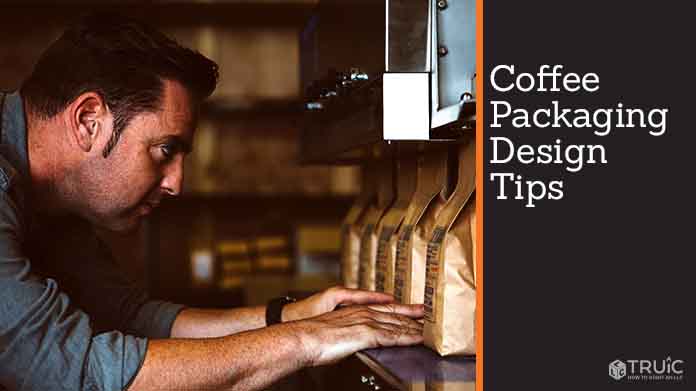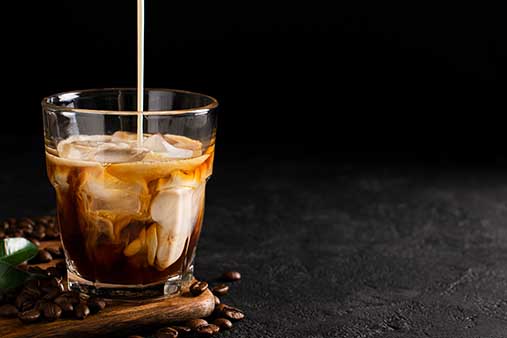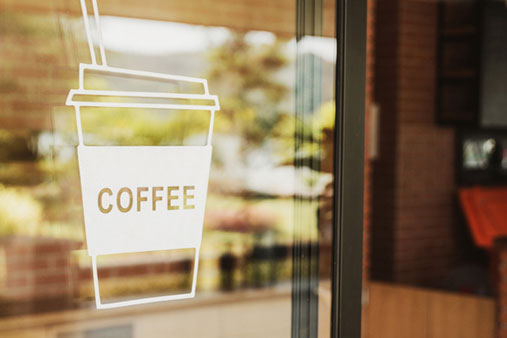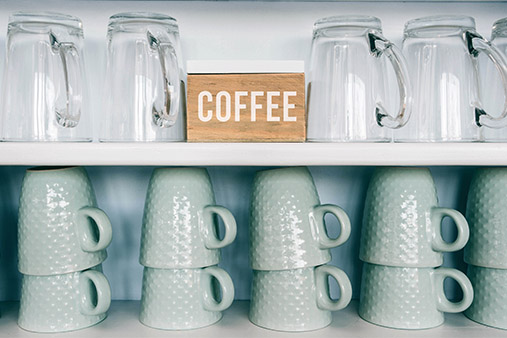Coffee Packaging Design Tips
No matter how good your coffee tastes or how masterfully you roast your beans, customers will never know that unless they pick up a bag of your product. The design of your coffee packaging should grab a customer’s attention and convince them to buy and enjoy your coffee — all while keeping your coffee fresh. Read on to learn how to design and produce the most-effective coffee packaging possible.
Recommended: Read our full, in-depth How to Start a Coffee Shop Business guides, inspired by coffee professionals, they will help make your coffee dreams real, from sourcing beans to hiring baristas, choosing the best POS system, forming an actual company, and everything in between.

Popular Packaging Options
You’ll find quite a few ways to package your coffee — each offering some distinct benefits. To select the right packaging for your business, evaluate each type based on its function, design, and cost. Here are the top packaging options you should consider:
- Flat-Bottom Bags: With all of its sides sealed and a flat bottom, this type of package can stand up on its own for easy display. It also comes with the option of adding a resealing zipper, a fold with a tin tie, or a sticker to keep the bag closed.
- Side-Fold Pouches: This is the cheapest option, featuring folded sides and a top seal that you can fold over and seal with a tin tie. While this type of package doesn’t stand up very well on its own, it provides classic style with a sleek, minimalist look.
- Quad-Seal Bags: While similar to side-fold pouches, this type of package has a more rectangular look due to the seals on each of its sides. As a result, these bags allow for the addition of a resealing zipper.
- Doypacks: This type of package stands up straight on an oval bottom, making it a great option for in-store displays. With an artisan, small-batch look, these bags tell customers the product within is worth the price. These packages cost a bit more than the other types, but come with the option of adding a resealing zipper — a popular feature among consumers.
Key Information to Display on Your Packaging
What you display on your coffee packaging will represent your business, its values, and the quality of your product. From certifications to the country of origin, every word matters. Here’s a list of the key information you should include on your coffee packaging:
- Roast: Consumers usually look for this detail first. Why? Because roast level impacts the flavor of coffee and many people have a strong loyalty to their preferred roast.
- Origin: The origin of your coffee represents another important detail because most consumers want to know if coffee is a single origin or a blend. Make sure you name the country that produces your coffee as well as the specific region it’s from within that country.
- Processing Method: Including the method used to process your coffee gives customers insights into what tasting notes to expect. For example, coffee beans processed using the natural method typically have brighter tasting notes than those processed with the washed method. For customers who don’t know a lot about coffee, but want to learn more, this information can provide an introduction into the world of coffee and how it becomes the beverage they love.
- Grower Information: If your business has a relationship with the farm(s) from which you source your coffee, include this information for the sake of transparency. Many consumers also enjoy knowing more about the source of the specialty products they buy. That makes certifications — often a big selling point for customers — another important detail about your producer(s) to feature on your packaging.
- Brewing Recommendations: Showcasing your recommended brewing style can encourage customers to buy your product by giving them all the tools they need to enjoy your coffee. Whether you suggest using a drip coffee maker, a French press, or a manual brew method, including this information also provides a means of quality control by ensuring customers will taste your coffee as intended.
- Flavor Notes: Highlighting your coffee’s flavor notes will help customers understand how it will taste before they make a purchase. Aim to include two or three tasting notes and, if applicable, details on your coffee’s mouthfeel, body, and acidity.
Why Freshness Comes First
When choosing your coffee packaging, your first question should be: “Will it keep my coffee fresh?” Three factors — oxygen, moisture, and light — can negatively impact a coffee’s freshness. If your packaging doesn’t have the right design to defend against these factors, your coffee will go stale by the time it reaches your customers.
A good coffee package will typically include:
- Modified-Atmosphere Packaging Technology: This technology removes oxygen from the package, which can have a detrimental effect on coffee, and replaces it with a gas like nitrogen.
- One-Way Degassing Valves: These additions to coffee packaging allow the carbon dioxide released from freshly roasted coffee to off-gas inside the package. This saves you time during packaging while keeping your coffee fresh.
- Resealing Tapes/Zippers or Foldable Tops: However you initially seal your coffee bags, giving customers a way to reseal their bags after opening can help them keep the coffee fresh for future use.
Coffee Shop Design Tips
The expression, “don’t judge a book by its cover,” doesn’t apply to coffee packaging. For micro-roasters trying to make a name for themselves, packaging design can provide an important selling point to the coffee shops and other businesses that might stock their coffee. Think of your coffee packaging like a billboard that represents your business and brand wherever it goes.
If you haven’t already developed your cafe’s branding, tackle that first before you design your coffee packaging. Branding — which should include a logo, color scheme, and guidelines on how to consistently communicate the brand personality — represents an essential part of your business’ marketability. If you need help with designing your logo, try our Free Coffee Shop Logo Maker. It's quick and easy and doesn't require any email sign ups.
Recommended: Check out our guide on Developing a Coffee Shop Business for more information on target markets, and all sorts of brand decisions to make.
Once you develop your cafe’s brand, decide how you want to portray it on your coffee packaging. If you have a tight budget, you can create stamps or stickers that feature your logo and information about your coffee to place on wholesale coffee bags. For business owners ready to take their packaging to the next level, consider working with a design company or your bag supplier to create a unique, printed coffee bag your customers will love.
Special Packaging for Coffee Samples
Selling small amounts of coffee or handing out coffee samples — a great way to attract new customers — requires special packaging. For this purpose, use a pillow bag. It’s the most affordable option with seals on each end that help preserve freshness. While this type of package doesn’t stand up on its own, it’s perfect for coffee samples and small batches.
Recommended Packaging Providers
As you evaluate packaging options, look for a provider you can trust to produce a quality bag that will draw customers in while keeping your coffee as fresh as possible. You can either buy plain coffee pouches on which to add your branding or you can purchase fully designed and printed coffee packages.
Here are a few great options to help you source both types of coffee packaging:
- Roastar: This company boasts packaging made in the United States that it fully prints with a fast turnover rate.
- Amcor: The new owner of the once-popular Bemis packaging company, this well-known packaging supplier offers recycled and biodegradable coffee pouches that can help your company go green.
- TricorBraun Flex: TricorBraun, which acquired flexible packaging leaders Taipak and Pacific Bag to form TricorBraun Flex, boasts a wide selection of customizable coffee packaging options. It also counts coffee giant Stumptown Coffee Roasters among its many customers.
- Savor Brands: This package and print house specializes in well-designed packaging that will showcase your company’s branding.
- North Atlantic Specialty Bag: This company offers classic gusset or hemmed bags in a variety of colors. It’s a great option for roasters looking for quality, wholesale bags.
Conclusion
When it comes to designing your coffee packaging, the most important factors to consider include your coffee’s freshness, an attention-grabbing design, and a comfortable price point.


